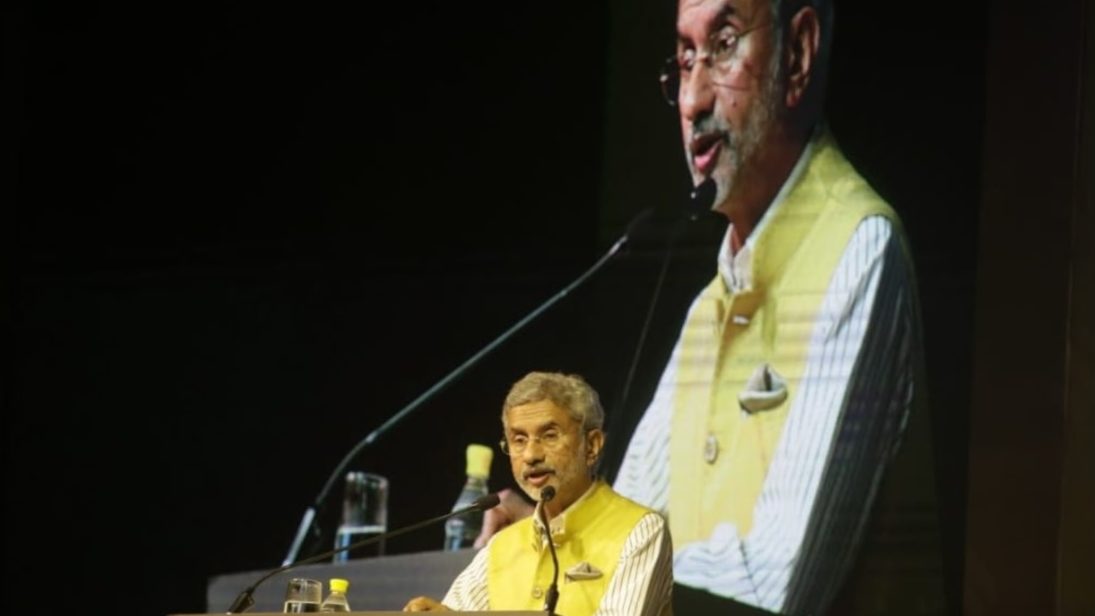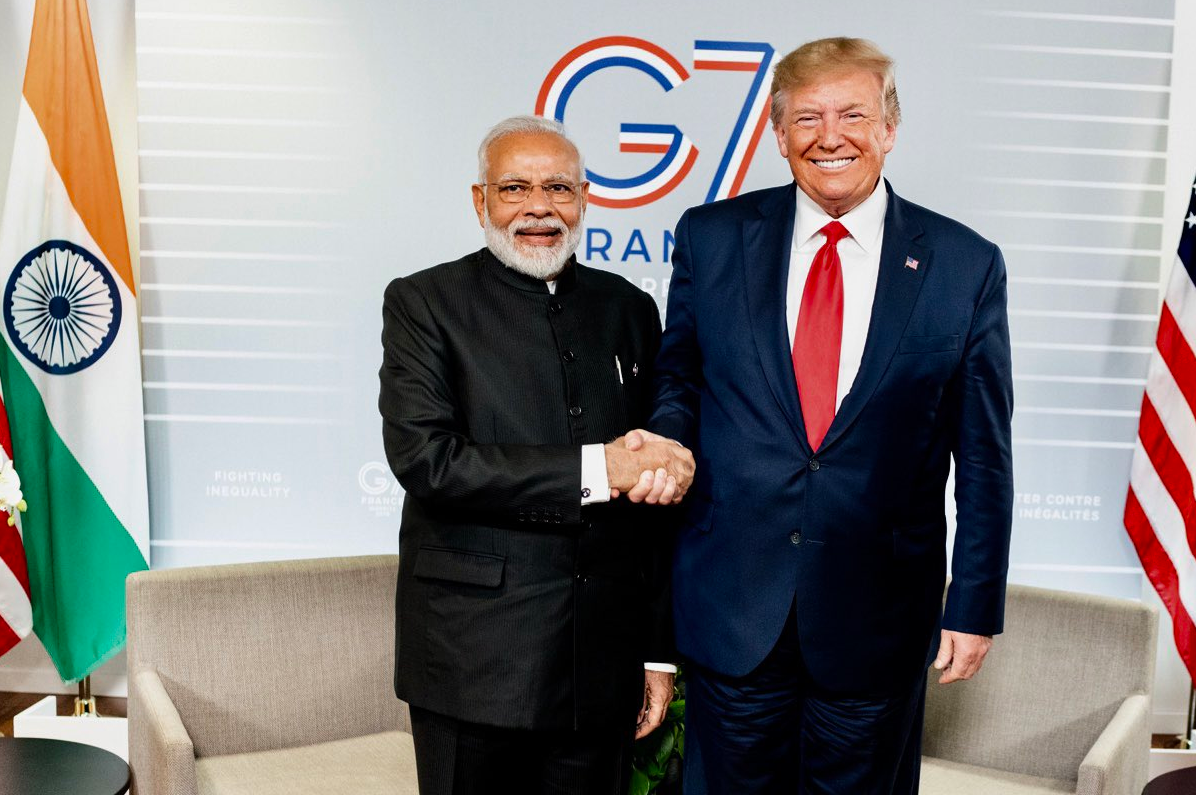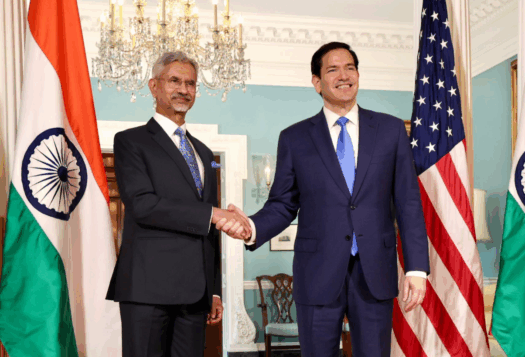
While delivering the 4th Ramnath Goenka Lecture recently, India’s External Affairs Minister S. Jaishankar contended that “India needs to follow an approach of working with multiple partners on different agendas” in order to ensure a multipolar Asia and a multipolar world. This statement perfectly encapsulates the decisive shift in Indian foreign policy towards multialignment in recent years, which Jaishankar described as “more energetic, more participative as compared to an earlier posture of abstention or non-involvement.” Under Narendra Modi, India’s quest to create an externally conducive environment for uninterrupted domestic growth and fulfill its lofty ambition of becoming a leading power requires New Delhi to tap resources within and beyond the country, from all viable quarters. This necessitates skillful diplomacy to engage multiple players to affect outcomes favorable to India’s national interest. Thus, in the prevailing configuration of a multipolar international system, multialignment seems to be the preferred choice of the Indian foreign policy establishment. However, the benefits of such a policy are not preordained and merit examination. What the past year has shown is that the Modi government’s bid to balance an array of partners has been partially successful. But diving into 2020, New Delhi should consider that such a strategy comes with challenges and requires a recognition of India’s constraints.
Multialignment in the Immediate Neighborhood
The principle challenge to India’s policy of multialignment in its immediate neighborhood is China. This is because India’s economic growth is closely tied to China, but Beijing is also the focus of New Delhi’s security predicament. This means that the China challenge not only accrues from Beijing’s greater capabilities vis-à-vis New Delhi, but its presence as a prominent development and security partner of most of India’s neighbors. Thus, sustaining the positives of India-China engagement while also dissuading its neighbors from falling further into China’s orbit is a multialignment challenge for New Delhi and is likely to be a preoccupation of the foreign policy establishment in 2020.
In 2019, the Modi government accorded priority to balancing China’s increasing influence in its immediate neighborhood while also maintaining dialogue and tactical cooperation with Beijing. The results were mixed. Some of India’s successes include the aggressive outreach to Maldives and Sri Lanka, including Prime Minister Modi’s tour of Male and Colombo as the first foreign visit of his second term, to reinvigorate those relationships after they were coming out of a China-leaning spell as well as the push for more frequent and meaningful engagement with the Bay of Bengal Initiative for Multi-Sectoral Technical and Economic Cooperation countries. India and China continuing their joint training of Afghan diplomats may also be considered a win for multialignment. However, since a key aspect of multialignment is ensuring that one relationship does not negatively impact the other, New Delhi’s decision to keep itself out of the Regional Comprehensive Economic Partnership, due to concerns over dumping of cheap Chinese goods, at the cost of disappointing its ASEAN partners was a rupture of this policy.
Sustaining the positives of India-China engagement while also dissuading its neighbors from falling further into China’s orbit is a multialignment challenge for New Delhi and is likely to be a preoccupation of the foreign policy establishment in 2020.
Thus, in 2020 and beyond, India would do well to be clear-eyed about the economic and strategic landscape in which it is operating and that multialignment comes with tradeoffs. Though the annual informal summit between the Indian prime minister and the Chinese president (the second was held in October 2019 in Mamallapuram, India) has shown the two sides’ intention to arrest any unmanageable downturn in ties and guide the relationship from the top, India would have to manage the consequences of some of its inherent and intractable disagreements with China, including the trade deficit and the border dispute. Meanwhile, a recognition of both its capability gap with China as well as its USP in the region would be useful, especially as New Delhi’s smaller neighbors seem to have perfected the realpolitik of playing India and China off of each other. Therefore, India would have to consider that the ultimate goal of its multialignment strategy in the immediate neighborhood may not be of trying to upend China’s influence wholesale but of exploring areas where it can offer its neighbors what Beijing cannot or may not.
Multialignment in the Indo-Pacific
The Indo-Pacific is the primary geopolitical theater in which India’s policy of multialignment will play out. But here too, China complicates India’s efforts because even though both seem to converge on calling for reforms in global financial systems, they have much to disagree on regarding principles such as freedom of navigation and otherwise preserving a rules-based order in the Indo-Pacific region. In this context, the broader strategic alignment between the United States and India as well as others such as Japan and Australia on upholding international norms and developing a partnership to manage China’s rise becomes pertinent. Hedging between Washington and Beijing as a new great power relationship emerges between them would require adroit diplomatic skills to get the most out of circumstances that are not in New Delhi’s control.

In 2019, India’s bid to maximize its options through multialignment have taken the form of the elevation of the Quadrilateral Security Initiative (comprising India, the United States, Japan, and Australia) to the foreign minister level, the initiation of a tri-services exercise with the United States called Tiger Triumph, and the maiden 2+2 dialogue with Japan at the foreign and defense minister’s level. However, if a key objective of Indo-U.S. engagement is for Washington to develop New Delhi’s defense capabilities, then there has not been much to show in 2019 with no major defense deals materializing, a setback to co-development of defense technologies, and a focus on differences over trade and commerce overshadowing other aspects of the relationship.
Overall, New Delhi has done fairly well in the past year to maintain a momentum of engagement with key regional and global players to protect its interests and minimize its losses. However, sustaining this progress in the years ahead would require a huge investment of economic and diplomatic resources, which India lacks at the moment.
To be sure, given the history of triangular dynamics involving India, Russia, and the United States, New Delhi’s sticking to its decision to buy the Russian made S-400 missile defense system while working to successfully avoid an adverse reaction from Washington counts as a positive of its multialignment practice in 2019. Cognizant also of the emerging China-Russia strategic alliance, India broadened the horizons of its relationship with Moscow through New Delhi’s assistance for the development of Russia’s Far East and Prime Minister Modi’s participation in the Far Eastern Economic Forum in Vladivostok. New Delhi was also able to balance its engagement in multilateral settings, by highlighting its interests through the Brazil, Russia, India, China, South Africa grouping, the Shanghai Cooperation Organization and the Russia, India, China trilateral understanding on the one hand and the Japan, America, India trilateral, the Quad, and the G-20 on the other.
However, being mindful that the vicissitudes of China-Russia and China-United States relations might throw up challenges for or force choices in Indian foreign policy going forward, both regionally and globally, is important. The U.S.-China trade war, which India had stakes in but not much leverage to shape outcomes, or China’s Huawei seeking to conduct 5G trials in India while the United States appealing India not to agree are good examples.
Looking Ahead to 2020 and Beyond
Overall, New Delhi has done fairly well in the past year to maintain a momentum of engagement with key regional and global players to protect its interests and minimize its losses. However, sustaining this progress in the years ahead would require a huge investment of economic and diplomatic resources, which India lacks at the moment. Thus, New Delhi may have to cut its coat according to its cloth and align its aspirations with its capabilities. This could be done by prioritizing regions and partners that are most relevant to the promotion and protection of its core interests. For instance, New Delhi conceptualizes the Indo-Pacific as extending into the Western Indian Ocean and Africa but with India being stretched thin even in its immediate neighborhood, serious involvement in this region may have to wait. A pragmatic Indian foreign policy in the era of an evolving world order would be based on a realistic appraisal of both opportunities and limitations.
Editor’s Note: SAV contributors from across the subcontinent recap the most significant political, economic, and strategic developments in South Asia in 2019 and analyze what opportunities and challenges lie ahead for each country in 2020. Read the full series here.
***
Click here to read this article in Urdu.
Image 1: MEA India via Twitter
Image 2: Donald Trump via Twitter


